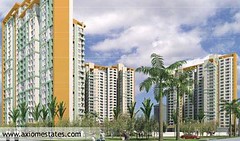While recognising the importance of the services sector (it accounts for 59 per cent of gross domestic product), the Economic Survey has raised concern over several components in it. Three months after the government rolled back its decision to allow 51 per cent foreign direct investment (FDI) in multi-brand retail, the survey referred to it as a major challenge before the sector.
FDI in retail could begin in a phased manner in the metros, the survey suggested, a day ahead of the Budget. Though it did not specify the details, experts said the government document hinted at a low FDI cap, perhaps one of 26 per cent. It has also talked of “incentivising” mom-and-pop stores (kirana shops) “to modernise and compete effectively with retail shops, foreign or domestic”.
While agricultural marketing could improve immensely with the growth in modern retail trade, the revenue to the government could also increase. Currently, the retail sector is largely unorganised and has low tax compliance, it argued.
Reacting to the portion in the survey relating to FDI in retail, Purnendu Kumar, senior vice-president (retail), Technopak, said, “This is something similar to what was articulated earlier — issues like better integration with farmers leading to better pricing for them and quality storage leading to lower wastages. It needs to be seen how the government would be able to execute this, considering the Congress party does not account for the majority on its own.” Incentivising small traders was a welcome step, but the details were not available, Kumar said.
Karandeep Singh, chief financial officer, Flipkart, a leading online retail chain, said, “While the future is promising, it will be realised only if the government acts on some of the guidelines provided in the survey.” According to Singh, opening up FDI in retail and continuing to make the infrastructure sector attractive for investments were critical to creating more jobs and having a multiplier impact on the economy.
